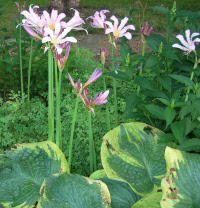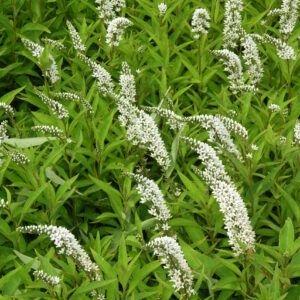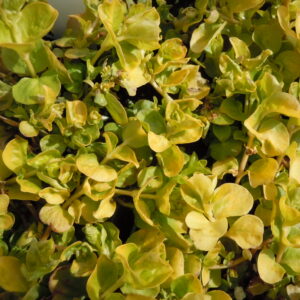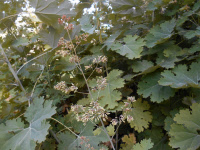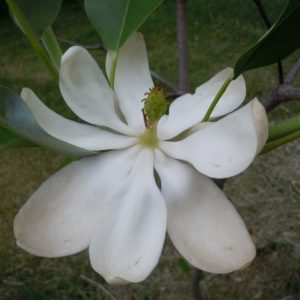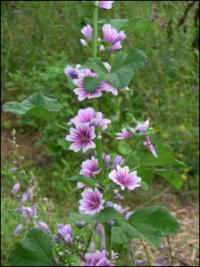Shop
- Sorry, this product cannot be purchased.
Showing 497–504 of 788 results
-
Lycoris squamigera Surprise lily, Naked lady Z 5-9
Strap-like leaves appear in April, then die back in summer. In August a shoot appears seemingly out-of-no-where, topped with pale pink trumpets. Flowers resemble Amaryllis.
Strap-like leaves appear in April, then die back in summer. In August a shoot appears seemingly out-of-no-where, topped with pale pink trumpets. Flowers resemble Amaryllis
Size: 18-24” x 6”
Care: full sun to part shade in moist well-drained soil
Native: JapanIntroduced to Western gardens from Japan in 1861 by Dr. George Rogers Hall (1820-1899), a physician who moved to Shanghai and became a trader, introducing several Japanese plants to the U.S.
-
Lysimachia clethroides Gooseneck loosestrife Z 3-8
White racemes looking like a goose neck from mid to late summer, deadhead to rebloom
White racemes looking like a goose neck from mid to late summer, deadhead to rebloom
Size: 36" x spreads
Care: sun to part shade in moist well-drained humusy soil
Native: China and Japan
Awards: England’s Royal Horticultural Society Award of MeritDioscorides (1st century A.D.) named Lysimachia after King Lysimachus of Thracia. This species collected before 1844.
-
Lysimachia nummularia ‘Aurea’ Creeping jenny Z 3-9
Bright yellow flowers in summer, chartreuse foliage which is the reason to grow this.
Bright yellow flowers in summer & chartreuse foliage which is the reason to grow this.
Size: 2” x spreading
Care: full sun to part shade in moist to moist well-drained soil
Native: Europe
Awards: England’s Royal Horticultural Society Award of Garden Merit.Dioscorides (1st century A.D.) named Lysimachia after King Lysimachus of Thracia. By the 1590’s used as cure for wounds and whooping cough. Species listed in Gardeners Dictionary, 1768. ‘Aurea’, H.H. Thomas 1915. Breck (1851) called this “suitable for rockwork or hanging from a pot in a northern exposure.” L.H. Bailey echoed this: “Very useful for rustic vases and baskets, also for carpeting ground in shady places.”
-
Macleaya cordata Plume poppy Z 4-9
An imposing plant - impressive, glaucous leaves with conspicuous veins and jagged margins, and, from July to October, tawny pink plumes.
An imposing plant – impressive, glaucous leaves with conspicuous veins and jagged margins, and, from July to October, tawny pink plumes.
Can not ship to: Delaware and Maryland
Size: 6-8' x 3' and spreading
Care: sun in well-drained to moist well-drained soil
Native: China and JapanEnglish seaman on Macartney’s Chinese mission sent this to Europe in 1792. In its native China the plant’s juice disinfected insect bites. Grown in American gardens since the 1800’s.
-
Magnolia virginiana Sweetbay magnolia 5-10
Large, ivory cups, lemon scented
ARCHIVED
Note: This is a plant not currently for sale. This is an archive page preserved for informational use.
Large, ivory cups, lemon scented, in May & June & sporadically all summer & fall. 6” long leaves, waxy green on top and silvery-frosted beneath. In fall fruits open to reveal bright red seeds.
Size: 20’ x 15’
Care: Sun to part shade in acidic, moist to moist well-drained soil
Native: Atlantic coast from NY to FL, west along Gulf coast to TX
Wildlife Value: nectar source for Spicebush swallowtail butterflyMagnolia named for Pierre Magnol, Montpellier professor of medicine and director of the botanic garden. (1638-1715) This species collected by Rev. John Banister in Virginia c. 1690. One of the mainstays of John Bartram’s seed business, Peter Collinson, Bartram’s agent in England, said, “the name Magnolia will sell a box of seeds.” Offered for sale in Bartram Garden’s 1783 Broadside, America’s 1st plant catalog. Pressed specimen in Emily Dickinson’s herbarium.
-
Malva alcea ‘fastiagata’ Hollyhock mallow Z 5-9
Bright rose mallows from early to late summer. Cut back by half in late July for rebloom.
OUT OF STOCK
Bright rose mallows from early to late summer. Cut back by half in late July for rebloom.
Size: 3’ x 18”
Care: Sun well-drained soil, drought tolerant
Native: ItalyMalvas have been cultivated for food or flower since 6000 B.C. In 1629 Parkinson described the uses for the Hollyhock mallow: “By reason of their viscous or slimie quality doe helpe to make the body soluble… helpe also to ease the paines of the stone and gravell, causing them to be the more easily voided: being outwardly applied, they mollisie hard tumors.”
-
Malva sylvestris ‘Zebrina’ Striped mallow – According to the books a perennial, but here it acts like an annual that reseeds – just watch for the seedlings in early summer. Z 5-8
June to October pink with purple striped mallow flowers
June to October pink with purple striped mallow flowers
Size: 36-48" x 24"
Care: Sun, moist well-drained soil. Moderately fertile.Malvas have been cultivated for food or flower since 6000 B.C. This was identified by Dioscorides in De Materica Medica for medicinal use around 70 A.D. Flowers and young leaves are edible – add petals to salads. The Malva sylvestris ‘Zebrina’ was listed as cultivated in the empire pursuant to Charlemagne’s Capitulare de Villis c. 800 A.D. The French word “mauve” comes from the color for this flower. Pressed specimen in Emily Dickinson’s herbarium.
-
Marshallia caespitosa Barbara’s Buttons Z 5-8
Dainty balls of white, fragrant flowers are borne on slender, leafless stalks, April to June
ARCHIVED
Note: This is a plant not currently for sale. This is an archive page preserved for informational use.
Dainty balls of white, fragrant flowers are borne on slender, leafless stalks, April to June
Size: 12-18” x 6-12”
Care: full sun to part shade in moist, well-drained soil
Native: KS to AR, LA & TX
Wildlife Value: Attracts bees and butterfliesMarshallia grows wild in prairies with Little bluestem and Coreopsis lanceolata. Nuttall, 1836
Genus name honors Humphry Marshall (1722-1801) and his nephew Moses Marshall (1758-1813), American botanists.

